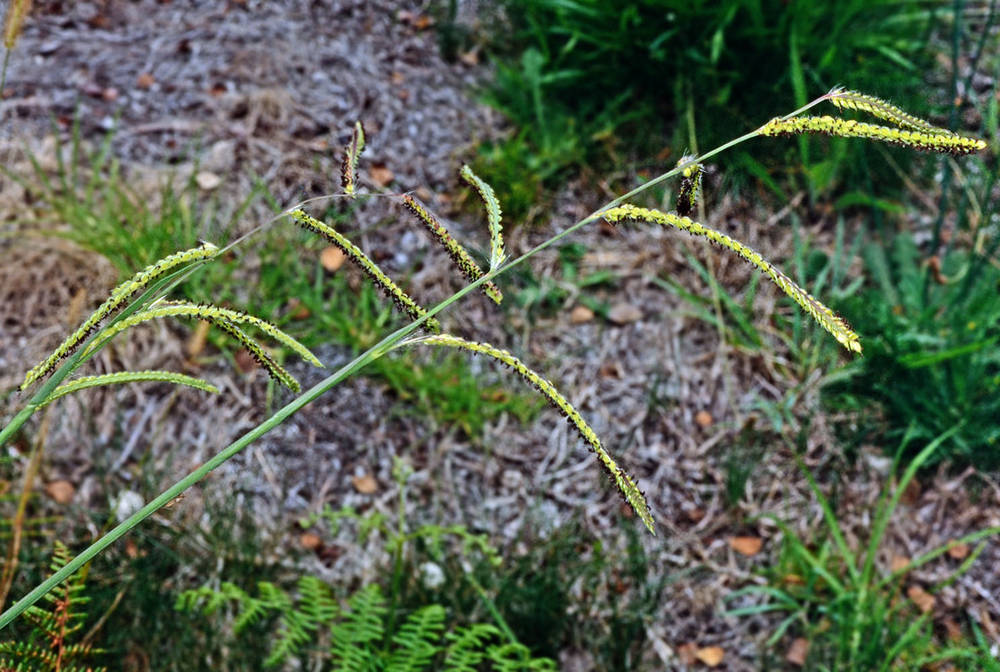Paspalum dilatatum
dallisgrass
bent at the base or decumbent.
sheaths glabrous or pubescent;
blades flat; to 35 cm × 2–16.5 mm, mostly glabrous; the upper surfaces with a few long hairs near base.
1.5– 12 cm;
branches 2–7, 4–13 cm;
spikelets in rows on one side of rachis.
dorsiventrally compressed, paired, 2.3–4 × 1.7–2.5 mm, 2 florets.
1;
lower glume absent;
upper glumes 2.3–4 mm, 5–7-veined, with long hairs on the margins.
2–2.3 mm, white to brown.
lower lemmas like upper glumes; upper lemmas 2–3 mm; straw-colored; hard;
tips acuminate; awnless, glabrous.
1–1.2 mm.
=20, 40, 50.
Paspalum dilatatum
Ditches, seepy road cuts, disturbed moist sites. 0–700m. CR, Est, Sisk, WV. CA, NV; south to Mexico; tropical and warmtemperate areas worldwide. Exotic.
This is a tall grass with spike-like, one-sided branches scattered well down the culm and paired oval spikelets. It stays green after most grasses in its habitats have turned brown. Digitaria species are superficially similar, but the inflorescence branches arise close together.
Barbara Wilson, Richard Brainerd, Nick Otting
- Local floras:
BC,
CA,
OR
- Local Web sites:
CalFlora,
CalPhotos,
Flora NW,
PNW Herbaria
WildflowerSearch
iNaturalist (observations)
USDA Plants Database
- LBJ Wildflower Center
- SEINet
- Plants of the World Online
- Encyclopedia of Life
- Wikipedia
- Google Image Search



